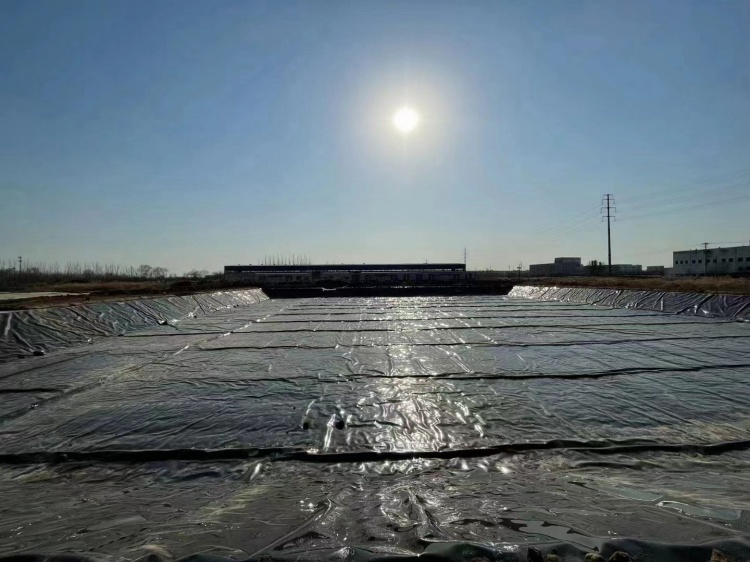The Common Problem In HDPE Geomembrane Installation
The common problem in HDPE geomembrane installation
l Geomembrane damage
1.Phenomenon
There are bursting,puncturing,abrading,tearing,breaking,aging and so on.
2.Main reasons:
(1)The thickness、mechanical data and durability of geomembrane is not in line with the design;packaging、transportation、storage are not in line with the request;the storage time exceeds the expiration date.
(2)The surface of the cusion layer under the geomembrane is uneven;the installation of the geomembrane is not flat, resulting in uneven stress distribution;the geomebrane is punctured or damaged by the stone,debris under or above the geomembrane.
(3)There are stuffs with sharp angel,geomembrane touches with the irregular rigid materials.
3.Key points of prevention and control measures:
(1)Use eligible geomembrane and package 、transport、store in line with the requirements
(2)Under the geomembrane,laying gravels、cushed stone or sand cushion,before laying the cushion,the foundational surface shoud be flat and the debris removed.
(3)The trial laying of the geomembrane should be carried out ,usually from one end to the other end.The top end is laid firstly,then the middle part,the ends must be laid delicately and anchored,the tense and tight should be proper.
(4)The management should be strengthened and prevent construction damage,backfill in time for protection.
l Poor quality of geotextile membrane splicing or repair, water leakage
1 Phenomenon:
(1) There are leakage and damage in the splicing of geomembranes; there are quality problems such as over-tightening, wrinkling, twisting and overlapping when the splicing and repair of geomembranes occur.
(2) The repair of the geomembrane is not strict, and there are parts where the adhesive is removed.
2 Main reasons:
(1) The joint is only tested by visual inspection.
(2) Water-soluble rubber is used.
(3) The base surface is not flat under the joint; the climate changes suddenly; the geotextile membrane is insufficient.
3 Key points of prevention and control measures:
(1) Conduct on-site inspection of all welds.
(2) Use qualified rubber.
(3) The foundation should be treated before splicing; the splicing should be carried out under dry and good climatic conditions as far as possible, and whether there are any missing joints, burns and wrinkles should be visually checked after splicing, and the detection should be carried out with the help of instruments; enough surplus should be left when laying the geomembrane.
l The geomembrane is loose or sliding
1 Phenomenon:
The longitudinal and transverse joints of the geomembrane are moved, disengaged or sunken; in the slope section, the geomembrane is sliding, falling or wrinkled.
2 Main reasons:
(1) The longitudinal and transverse connections of the geomembrane are not reliable, and the length is too small.
(2) The joint is uneven and the force is not uniform, resulting in the joint loosening.
(3) The upper end is not anchored or the anchoring effect is poor, and the upper filler slides under the action of its own gravity.
3 Key points of prevention and control measures:
(1) The overlap width of the geomembrane should be determined according to the foundation conditions at 0.3m~0.9m, and avoid the force at the overlap.
(2) During construction, the foundation at the joint should be flat and solid and the anchoring effect at the end position should be guaranteed.





